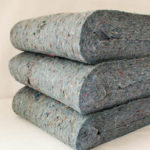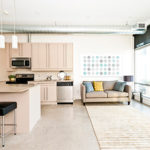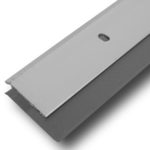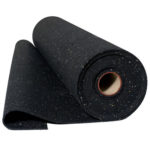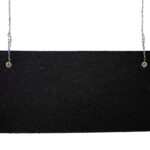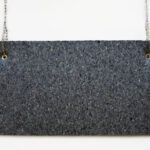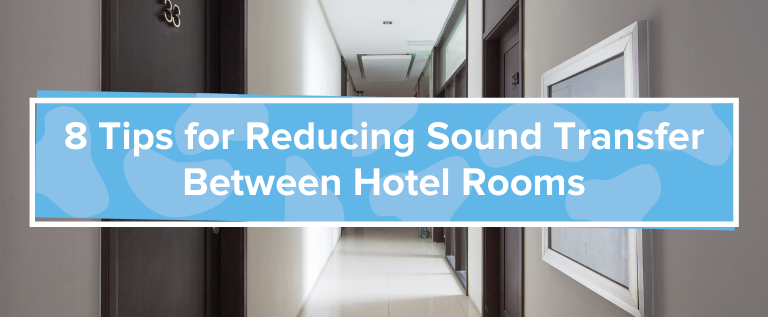
When guests book a room in your hotel, they depend on you to provide a peaceful place to rest for the night. Having a private room may not be enough for your guests to feel comfortable if neighboring noises permeate their walls during their stay.
To ensure a pleasant customer experience, hotels need soundproofing solutions that work wonders and maintain a professional interior aesthetic. Here are some of our top tips for soundproofing a hotel room so you can provide a more relaxing place to stay.
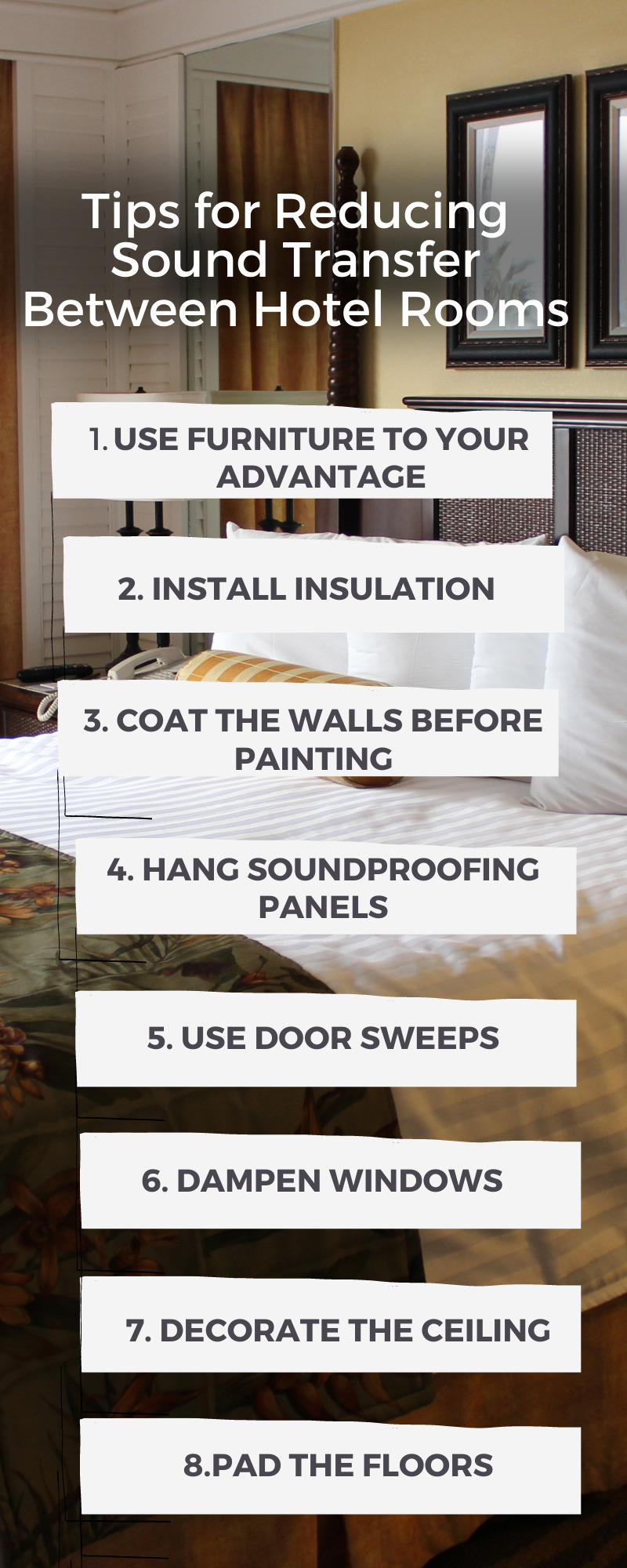
- Use furniture to your advantage: Before you tear your rooms apart or spend money on materials, be sure to use the resources you already have. Large, fluffy furnishings like beds and couches can soak up a lot of noise, as can rugs, curtains and blankets. Position furniture along your walls to catch sound before it passes to the next room.
- Install insulation: If you’re building new rooms or renovating old ones, decouple the walls between rooms and install soundproofing insulation to fill the space. Also great for use in ceilings, soundproofing insulation will soak up noise and help to reduce energy costs.
- Coat the walls before painting: Continuing with ideas to implement during renovations, you can give your walls’ acoustic performance an instant boost by applying soundproof coating before you paint. This coating disperses sound by converting its energy into heat. The material is easy to paint onto reflective surfaces and responds well to any finish.
- Hang soundproofing panels: Decorating hotel room walls with acoustic panels is an effective, visually appealing way to stop noise from transferring. For added aesthetic freedom, purchase art acoustic panels that feature any design of your choice.
- Use door sweeps: As hard as you try to confine noise within a room’s walls, the doors to the hallway let sound pass underneath without interference. To fill the cracks, install door seals or sweeps that slip easily underneath a door or line its perimeter.
- Dampen windows: If your guests notice sound disturbances from outside, you’ll need to find a way to prevent noise transfer through your windows. Sound deadening strips peel and stick to windows for easy application.
- Decorate the ceiling: Ceilings are easy to skip over when implementing soundproofing solutions, but they present a great opportunity to cut back on noise transfer. To confine sound to its room, hang acoustic baffles from the ceiling. These baffles are easy to install and come in a variety of colors to complement any room’s design.
- Pad the floors: One of the most common disturbances hotel guests experience is banging or pounding sounds from the room above. With padded flooring underlayments like Impact Barrier QT Flooring Underlayment, you can reduce the effects of thuds from footsteps or moving furniture on the room below.
Improve Your Hotel’s Audio Privacy With Soundproof Cow
Guest comfort and privacy are top priorities for any hotel. By installing professional acoustic materials from Soundproof Cow, you can facilitate a restful environment with a distinguished look. To learn more about the best soundproofing solutions for your hotel, browse our inventory and contact us to schedule a free acoustic analysis.




